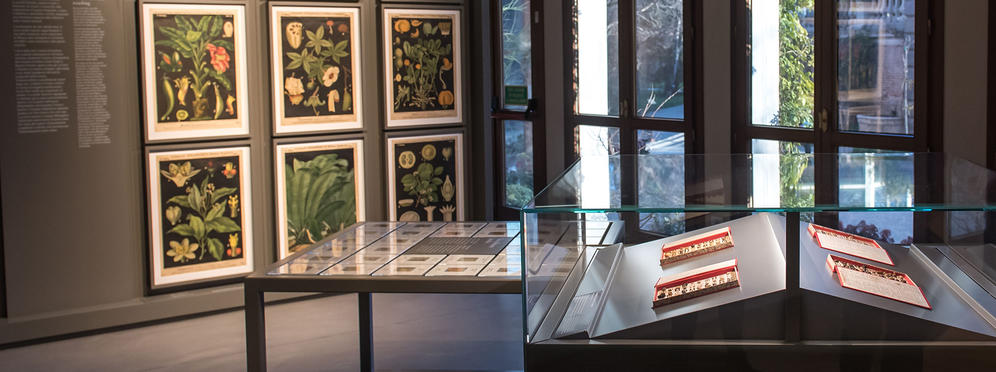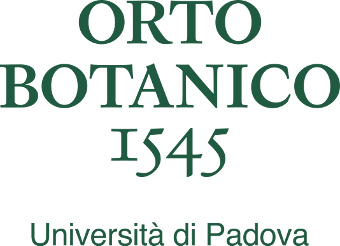Botany lesson
Wax mushrooms and 19th century large format illustrations, test tubes with seeds and quizzes to learn about plants and the journey of seeds

This room recreates the ambience of a lecture hall in the late 19th century, when lessons were no longer based only on the living plants of the outdoor flowerbeds or dried specimens of the herbarium; teaching aids now included wax models of fungi, wall charts, woods of every shape and size, and seeds of every kind — useful and edible plants, weeds — from all around the world. Thanks to these resources, students learned by observing, recognizing and distinguishing shapes, details, colours and uses of the plant world.
During the 19th and 20th centuries, lectures were accompanied by large charts hung on the walls of classrooms and laboratories in schools and universities. Created by naturalists and artists working together, these colour lithographs reflect what was a felicitous period in the teaching of natural sciences. The nine wall charts exhibited here feature a black background, and belong to one of the many sets preserved in the Museum. They were printed in Germany in 1899 and have as their subject matter exotic plants: nux vomica (Strychnos nux-vomica), ginger (Zingiber officinale), banana (Musa x paradisiaca), cotton (Gossypium herbaceum), peanut (Arachis hypogaea), ivory nut palm (Phytelephas microcarpa), baobab (Adansonia digitata), mango (Mangifera indica) and camphor (Cinnamomum camphora).
Also on show in the room are 19 tree trunk sections, used in lessons to help students recognize the various types of timber. Between 1905 and 1927, Adriano Fiori, who had studied under Pier Andrea Saccardo, also made a collection of more than two hundred woods — mainly Italian, but including a few exotic species, such as gingko, Xylotomotheca Italica. — cut in ultra-thin slices.
In the early 1900s, agriculturalist Raffaello Sernagiotto collected the seeds of cultivated plants and weeds found in Italy, organizing them into ten boxes, each containing one hundred species: these are the Centuriae, which reflect the biodiversity of the Italian countryside as it was more than one hundred years ago. Also on display are some of the 16,000 test tubes preserved by the Museum, containing seeds of ornamental and edible plants, acquired through exchanges with other botanical gardens that continue today. One item from the collection is the unmistakable “coco de mer”, the biggest seed of the plant kingdom, which can weight up to 25 kg. There are also two collections of models representing the various species of fungi: the first, made by Carlo Avogadro degli Azzoni, are moulded from beeswax and date from the 1830s; the second, from forty years later, were fashioned in clay by Egisto Tortoni of the Natural History Museum in Florence.
The exhibition room offers play-to-learn attractions in the form of two educational quizzes, designed and created by Dotdotdot: The identikit of plants, offering the chance to learn about plants from their features, and Travelling with seeds, which helps to understand how plants are able to “relocate” — going sometimes on veritable odysseys— as the result of their seeds being dispersed.






